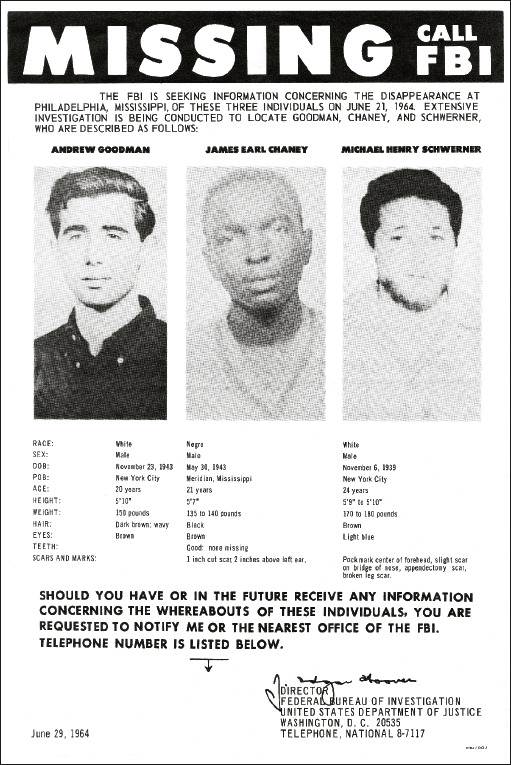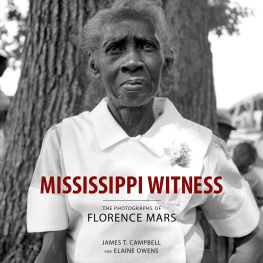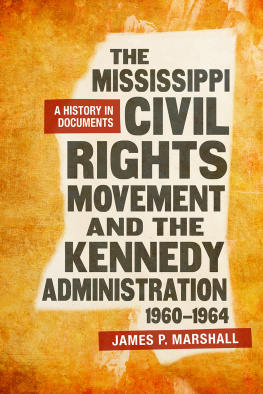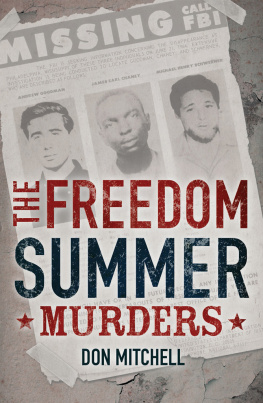
MISSISSIPPI WITNESS
MISSISSIPPI WITNESS
THE PHOTOGRAPHS OF
FLORENCE MARS
JAMES T. CAMPBELL AND ELAINE OWENS
UNIVERSITY PRESS OF MISSISSIPPI / JACKSON
The University Press of Mississippi is the scholarly publishing agency of the Mississippi Institutions of Higher Learning: Alcorn State University, Delta State University, Jackson State University, Mississippi State University, Mississippi University for Women, Mississippi Valley State University, University of Mississippi, and University of Southern Mississippi.
www.upress.state.ms.us
The University Press of Mississippi is a member of the Association of University Presses.
All royalties from the sale of this book will be paid to the Mississippi Civil Rights Museum.
Copyright 2019 by University Press of Mississippi
All rights reserved
Manufactured in China
First printing 2019
Library of Congress Cataloging-in-Publication Data
Names: Campbell, James T., author of introduction. | Owens, Elaine, 1950compiler.
Title: Mississippi witness: the photographs of Florence Mars / James T. Campbell and Elaine Owens.
Description: Jackson: University Press of Mississippi, [2019] | Includes bibliographical references and index. |
Identifiers: LCCN 2018025093 (print) | LCCN 2018029214 (ebook) | ISBN 9781496820914 (epub single) | ISBN 9781496820921 (epub institutional) | ISBN 9781496820938 ( pdf single) | ISBN 9781496820945 (pdf institutional) | ISBN 9781496820907 (cloth)
Subjects: LCSH: Mars, Florence, 19232006Pictorial works. | Documentary photographyMississippiPhiladelphia. | Philadelphia (Miss.)Race relations. | Philadelphia (Miss.)Social life and customs20th century. | MississippiHistory20th century. | LCGFT: Photobooks. | Illustrated works.
Classification: LCC E185.93.M6 (ebook) | LCC E185.93.M6 M578 2019 (print) | DDC 305.8009762/6850222dc23
LC record available at https://lccn.loc.gov/2018025093
British Library Cataloging-in-Publication Data available
To two Mississippians: Stanley Dearman and Hollis Watkins
CONTENTS
ACKNOWLEDGMENTS
To produce a book is to accumulate debts that one can never adequately repay.
Our first and greatest debt is to the people who made the images, not only to Florence Mars but also to the individuals who appear within the frame. We have been able to identify only some of the latter. What passed between them and Mars is lost to us. But together they created works of surpassing beauty and power, shimmers of light in a dark time.
Many people shared stories of Mars and of the extraordinary historical events in which she and they were swept up. Heartfelt thanks to Betty Pearson (Marss onetime college roommate and lifelong friend), Stanley Dearman, Carolyn Dearman, Dick Molpus, Dawn Lea Mars Chalmers, Jeremy Chalmers, Jewel Rush McDonald, Cleo McDonald, Evelyn Cole Calloway, Fent DeWeese, Rita Bender, Bill Bender, Carolyn Goodman, David Goodman, Ben Chaney, Julia Chaney Moss, Dave Dennis, Charlie Cobb, and the Reverend Clinton Collier. Sadly, many on the list did not live to see the books completion.
Several friends and colleagues read drafts of the books introduction, offering helpful comments and corrections. Thank you Stanley Dearman, Joe Crespino, Andrea van Niekerk, Kim Beil, Bruce Schulman, and Annette Counts. Conversations with Laura Wexler helped to illuminate the complex ethical issues inherent in documentary photography, particularly with photographs taken in contexts of profound structural inequality. Sarah Wishingrad and Robbie Zimbroff provided invaluable research assistance. Indeed, it was Robbie who first glimpsed the possibility of a book. Thank you.
Staff at the Mississippi Department of Archives and History, where Marss photographs are housed, were unfailingly gracious and helpful. Special thanks to director Katie Blount, Archives and Records Services director David Pilcher, and scanning technician Judy Hocking.
Working with the University Press of Mississippi has been a delight. Craig Gill supported the project at every turn. Todd Lape designed the book. Emily Bandy kept the world from spinning apart.
Our families make all things possible. Thank you Pete, Michael, Stephen, Laurie, Andrea, Thomas, Daniel, and Leah.
Born on opposite sides of Mississippis Jim Crow divide, Stanley Dearman and Hollis Watkins saw the violent terror of 1964 close at hand. In their different ways, both dedicated their lives to making their native state a more just and decent place. We dedicate the book to them.
MISSISSIPPI WITNESS
INTRODUCTION
Certain Things Are Taken to Be Self-Evident
James T. Campbell
To understand someone, Florence Mars used to say, you needed to know the background. You had to go back to the beginning, to understand peoples origins, their families, the sum total of their history. The photographs in this book reflect Marss attempt to understand her own background, to come to terms with a world that she loved and loathed, a world awash in beauty and rife with violence and cruelty.
The photographs were taken in Mississippi, most in the vicinity of Philadelphia, a small country town in the red clay hills of Neshoba County. Mars herself was a fourth-generation Neshoban, descended from families who first entered the area following the 1830 Treaty of Dancing Rabbit Creek, which opened 11 million acres of Choctaw land to white settlement. With a few exceptions, the photos were taken between 1954 and 1964, against the backdrop of a burgeoning black freedom movement and a murderous white reaction. I knew the old relationship between white and Negro was over, she later recalled. Because I knew the street scenes of Philadelphia would soon begin to change, I bought a camera and enlarger, built a darkroom, and began to snap thousands of pictures.
What Mars could not have anticipated was the way that the forces of freedom and reaction would converge on her hometown. On June 21, 1964, three civil rights workersJames Chaney, Michael Schwerner, and Andrew Goodmanwere murdered on a country road outside Philadelphia. The young men had come to Neshoba County to investigate the burning of Mount Zion Methodist Church, a small, wood-frame church in Longdale, a community of independent black landowners ten miles east of Philadelphia. Schwerner, a white New Yorker, and Chaney, a black Mississippian, were veteran activists working under the auspices of the Council of Federated Organizations (COFO), an umbrella civil rights group with an office in nearby Meridian. Goodman, also a white New Yorker, had arrived in Mississippi only the day before, the first of some eight hundred student volunteers brought into the state by COFO as part of its 1964 Freedom Summer project. Arrested on trumped-up speeding charges, the three were held for seven hours in Philadelphias tiny jail while members of the Neshoba and Lauderdale County chapters of the Ku Klux Klan set in motion a preconceived elimination plan. Released late in the evening, they were intercepted on their way back to Meridian, driven to a remote crossroads, shot, and buried in an earthen dam, from which their bodies were recovered after a forty-four-day search.

FBI poster seeking information about the three missing civil rights workers, June 1964.
Such is the notoriety of the case that it takes some effort to remember that Chaney, Schwerner, and Goodman were not the only civil rights workers murdered during Jim Crows violent death throes. In Mississippi alone, the roster includes George Lee, Lamar Smith, Herbert Lee, Medgar Evers, Louis Allen, Vernon Dahmer, and Wharlest Jackson, to name only some. Countless other people were beaten and terrorized. One of the objects of the 1964 Freedom Summer project was to dramatize the violence that organizers routinely faced in the state. The idea, simply put, was that if the people being assaulted and killed were white students from prominent northern universities rather than black Mississippians, then the federal government might finally be roused to action. There was a tremendous amount of violence in the state that was being ignored, one COFO field-worker later explained. You had to bring the countrys attention to the state, and the obvious way to do that is to bring the countrys children down there.
Next page






